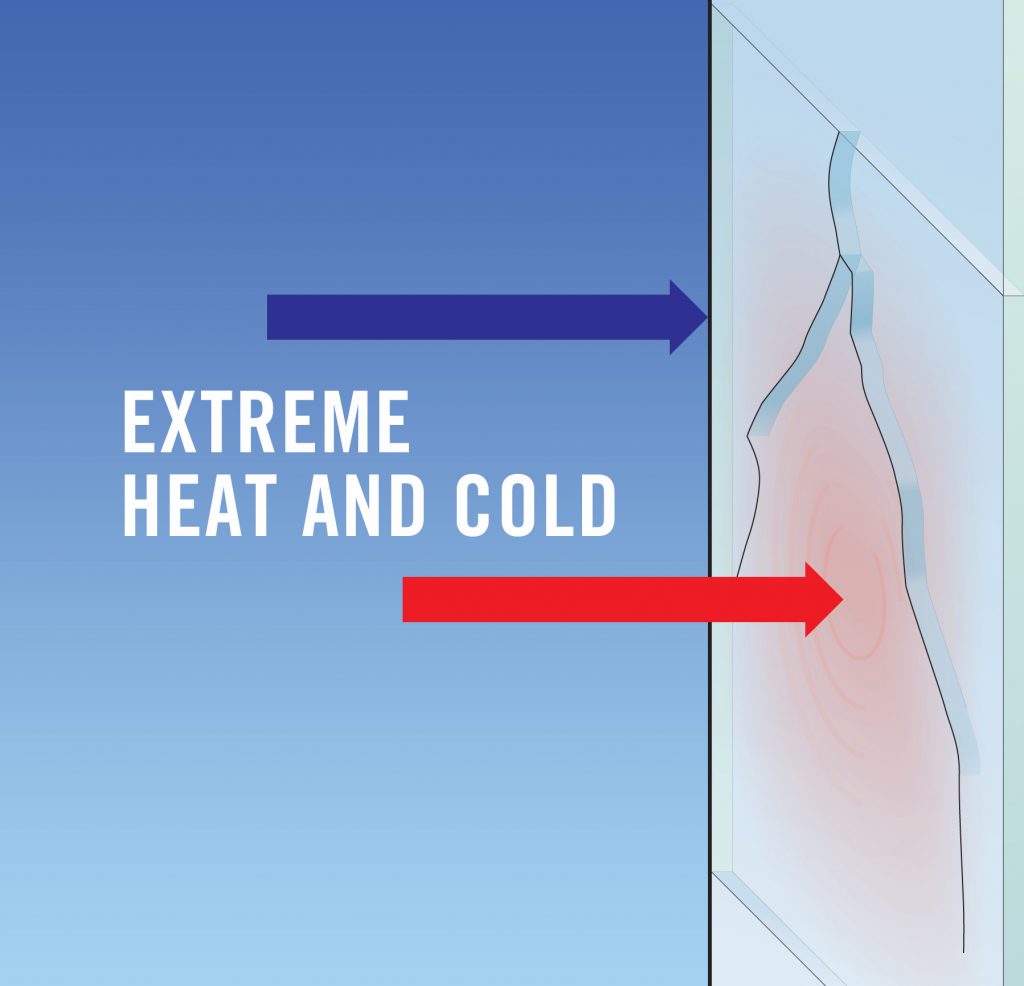
While aesthetically versatile, along with offering outstanding performance, working with glass does come with some special considerations. This is especially relevant in commercial architecture, where it’s common to specify large glass panels to achieve a dramatic look. A thermal stress break is one such issue.
A thermal stress break occurs when the center of the glass in a window unit becomes hotter than the edge of the glass that is inside the framing and the center expands. The resulting tensile stress placed on the glass edges can exceed the strength of the glass causing the glass to break at a 90-degree angle in from the edge.
Other factors that can impact glass and its ability to resist a thermal stress break include:
- Glass Type: Glass is available in a wide range of colors – from ultra-clear to the deepest gray tint. Tinted and spectrally selective glasses absorb solar radiation and heat up – and this absorption makes tinted glasses more susceptible than clear glasses to break due to thermal stress.
- Coating Type and Location: Reflective and low-e coatings both reflect and absorb solar radiation, and depending on their surface location in an IG, they can increase the amount of solar radiation absorbed by the outer (or inner) pane of glass and change the associated thermal stress risks.
- Outdoor Shading Patterns: This is one of the most dynamic elements since shading patterns vary seasonally. One way to deal with this factor is to minimize locations within your project where less than 50% of the glass panel is covered with shade – this will help avoid temperature gradient extremes.
- Indoor Shading Devices: Just as outdoor shading patterns can impact the thermal load put on glass, indoor shading devices, such as blinds or drapes, also can increase the temperature of the glass. This occurs when the blind or shade reflects the solar radiation back through the glass, reducing the convection and conduction of the heat away from the glass.
- Heating Register Location and Orientation: In any building, the registers need to be placed carefully in order to ensure that warm air isn’t being directed at the glass, which can cause the glass to heat up and lead to breakage.
- Framing System: Look for a framing system that has a low heat capacity as one more way to minimize the chance of a break.







